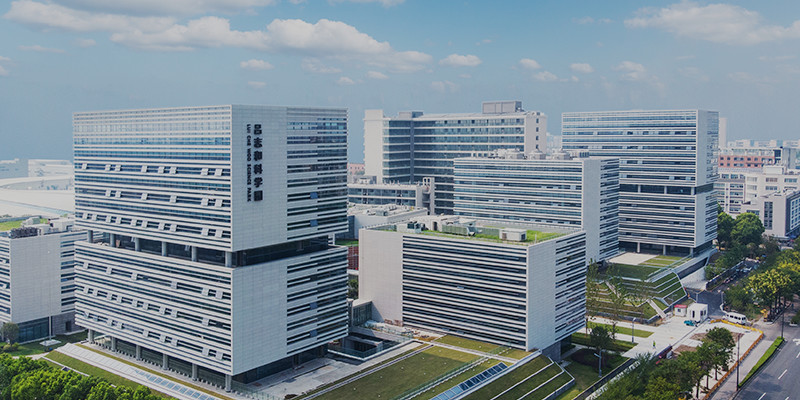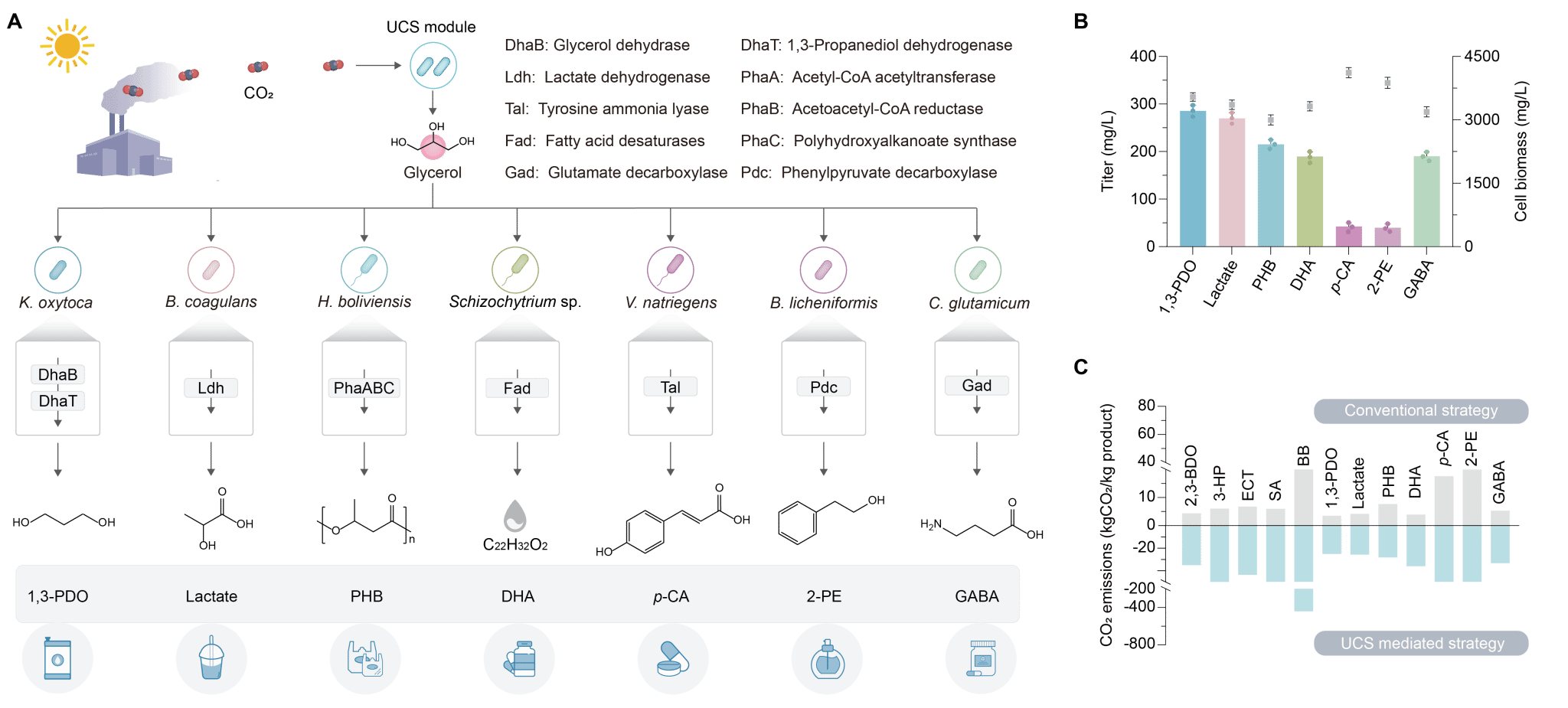搜索


Recently, the team led by Professor Jun Ni from the School of Life Sciences and Biotechnology / Center for Synthetic Science Innovation, Zhangjiang Institute for Advanced Study, Shanghai Jiao Tong University, published their latest research in Journal of the American Chemical Society under the title: “Facilitated channeling of fixed carbon and energy into chemicals in artificial phototrophic communities.”In previous work, Prof. Ni’s group developed highly compatible artificial phototrophic communities for biosynthesis (Angew. Chem. Int. Ed. 2023, 62, e202215013; ChemBioChem 2023, 24, e202300122) and used a spatial compartmentalization strategy to couple photosynthetic carbon fixation with quiescent cell catalysis, achieving gram-per-liter scale conversion of CO₂ into various high-value products (Nat. Synth. 2023, 2, 960–971).This latest research marks another breakthrough by the team in the field of CO₂ bioconversion using artificial microbial systems. They developed a universal carbon fixation module and, based on this, further expanded the construction boundaries of artificial phototrophic communities, enabling efficient light-driven CO₂ conversion into a variety of chemicals.
High-value CO₂ utilization technology holds promise for both mitigating climate change and achieving sustainable biomanufacturing.Artificial phototrophic communities can, through division of labor among members, reduce metabolic burdens and enhance overall CO₂ utilization efficiency, showing broad potential in the production of value-added products, bioremediation, and medical applications.However, current artificial communities often suffer from low compatibility among members, resulting in inefficient carbon and energy transfer between species, which severely limits CO₂-to-target compound synthesis.
In this work, the researchers developed a universal CO₂ fixation module based on photosynthetic cyanobacteria, channeling carbon and energy efficiently into a metabolically accessible intermediate—glycerol.Using KEGG database-based bioinformatics analysis and environmental sample sequencing, they identified over 7,000 natural microbial species capable of utilizing glycerol, making them suitable partners for constructing artificial communities with the universal carbon fixation module.By co-culturing glycerol-producing cyanobacteria with model microbes such as Escherichia coli and Saccharomyces cerevisiae, the team successfully synthesized ectoine, 3-hydroxypropionic acid, β-elemene, succinic acid, and other compounds.Additionally, they explored the module’s compatibility with other industrial microbes such as Bacillus coagulans and Corynebacterium glutamicum, constructing artificial communities that produced over a dozen compounds including phenylethanol.Transcriptomic analysis revealed that efficient carbon and energy exchange, accelerated electron transfer, and nutrient cycling may play key roles in promoting interspecies interactions.
This study not only expands the boundaries of artificial phototrophic community construction, but also creates a plug-and-play negative-carbon biomanufacturing platform, significantly enhancing the efficiency of CO₂-to-chemical conversion. It holds promise for advancing the low-carbon biomanufacturing industry.

Doctoral student Chaofeng Li from the School of Life Sciences and Biotechnology / Zhangjiang Institute for Advanced Study at SJTU is the first author of this paper.Associate Professor Jun Ni is the corresponding author.
This work was supported by the National Natural Science Foundation of China’s youth basic research program and the National Key R&D Program of China.
Original link: https://doi.org/10.1021/jacs.4c15940






 Address:No.1308 Keyuan Road, Pudong District, Shanghai
Address:No.1308 Keyuan Road, Pudong District, Shanghai Phone:86-21-54740000
Phone:86-21-54740000 E-mail:zias@sjtu.edu.cn
E-mail:zias@sjtu.edu.cn